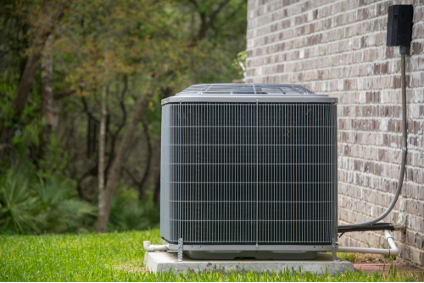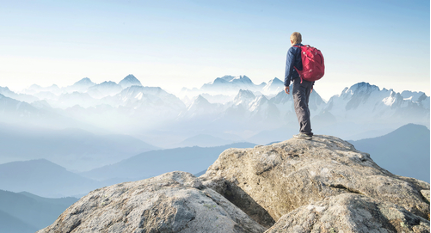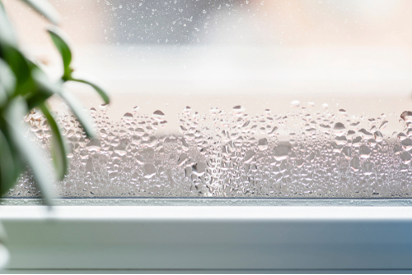Whether you’re moving overseas or just across state lines, it can be difficult to adjust to a different climate. Adjusting fully will take time, but you can make the transition quicker, safer and more comfortable by following our tips!
How to Adjust to Living in a New Climate

1. Plan ahead
This is always a good idea when you’re planning a move. To help yourself adjust to your new home, it’s best to plan your reaction to the new climate ahead of time. If possible, follow these tips:
- Timing/season of your move. If you move during extreme seasons or weather, it will make the transition more difficult. When you plan ahead, you can time your relocation during a season where the weather is closer to your current home.
- Wait to get new gear & equipment. When you move to a climate that requires specific gear—especially clothes—it might seem easier to stock up before you go. And for some items, that’s true. However, there are a couple reasons you should wait to shop until you get to your new spot: your new space will have better quality gear for the weather in that area, and it’s easier (and cheaper) to move with less stuff.
- Make sure you have quality GPS available. Unfamiliar roads + extreme weather conditions = difficulty getting around. Make sure you have reliable GPS available to prevent any transportation-related injuries or damages. If you are moving to a cold climate with snow and ice, be sure to winterize your car, for example.
2. Don’t try to match the climate of your previous home
It can be tempting to want to simulate the climate of your previous home in your new space using your HVAC system. However, doing so can spread allergens and encourage bacterial growth… not to mention increase your family’s adjustment time.

To help yourself adjust, change your bedding and clothes to the new climate. For example, if you’ve moved to a place with high humidity and warm temperatures, switch to thinner sheets and clothes!
Keep in mind it takes about 2 weeks for most folks to adjust to new weather conditions. The best way to facilitate your adjustment is simply by keeping your home comfortable—just avoid using your climate controller or humidifier to drastically change your home’s interior climate.
3. Make your health a priority
Making your health a priority is always a good idea. However, it’s especially important when you’re going through a big change. Schedule an appointment with your doctor before moving to discuss how the new conditions could affect your health.
There isn’t a trick for instant adjustment when it comes to your health, but you can support a healthy transition by minimizing the health risks posed by changes in altitude, humidity and temperature.
Altitude
For most people, decreased altitude shouldn’t cause any ill effects—other than maybe some ear-popping, which comes with initial pressure change. However, if you’re moving to a higher altitude, you might experience some altitude sickness, which can manifest in the following ways:
- Decreased physical stamina. Altitude changes the way your muscles perform, including your heart and lungs. Don’t undertake any strenuous activities when you first arrive. It’s best to build up your tolerance slowly.
- At a higher altitude, you breathe harder and sweat more. This means you’re more likely to experience dehydration. Make sure you keep a water bottle nearby!
- Sleep disturbances. A lot of people experience some insomnia or sleep apnea at high altitudes. Take a mild sleep aid, such as melatonin, to help you get the rest you need.
- Flair up of pre-existing conditions. Altitude can often exacerbate pre-existing conditions such as high blood pressure, heart disease and anemia.

Humidity
Changes in the humidity might be the first thing you notice after a move. This is because the concentration of moisture in the air instantly impacts your hair, skin and respiration. Depending how extreme the change is, you might need to switch up your health and beauty products to compensate for the changes in humidity. High and low humidity impact you differently; here’s how:
- High Humidity. High levels of humidity exacerbate allergies and respiratory conditions. To decrease these risks, make sure your new home is well-ventilated.
- Low Humidity. Lack of moisture can cause skin irritation, nose bleeds, dehydration, immune system compromises and some breathing issues. Apply lotion to dry skin and drink plenty of fluids to prevent these issues!

Temperature
Extreme temps can take some getting used to. To protect you and your family’s health through the highs and lows, follow these tips:
- High Temperatures. Hot weather increases the risk of stroke, sunburn and even heart attack. Stay hydrated and be sure to wear sunscreen. Dress appropriately for the weather and cut your pets’ long fur so they don’t overheat.
- Low Temperatures. When the temperature drops, the risk of hypothermia and other cold diseases increases. If you aren’t used to navigating icy walkways, you could also injure yourself from slipping and falling. Bundle up and walk carefully when you’re exposed to cold weather.

Make Your Adjustment Easier with Wheaton!
Don’t let the new climate hold you back! A move can offer exciting and new opportunities, and you should take advantage of those. Once you’re ready to take the leap and relocate to your new home, get in touch with Wheaton!


